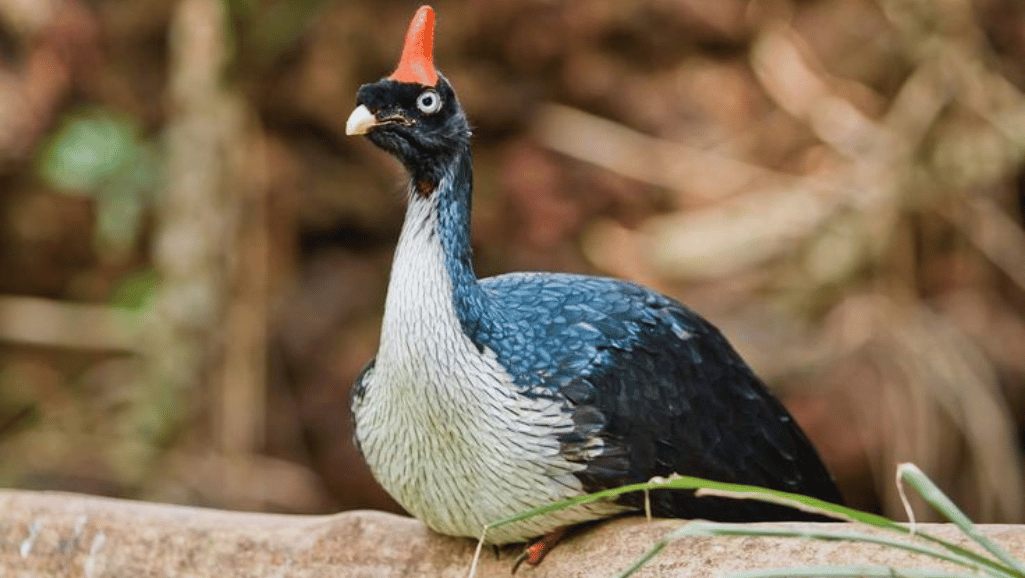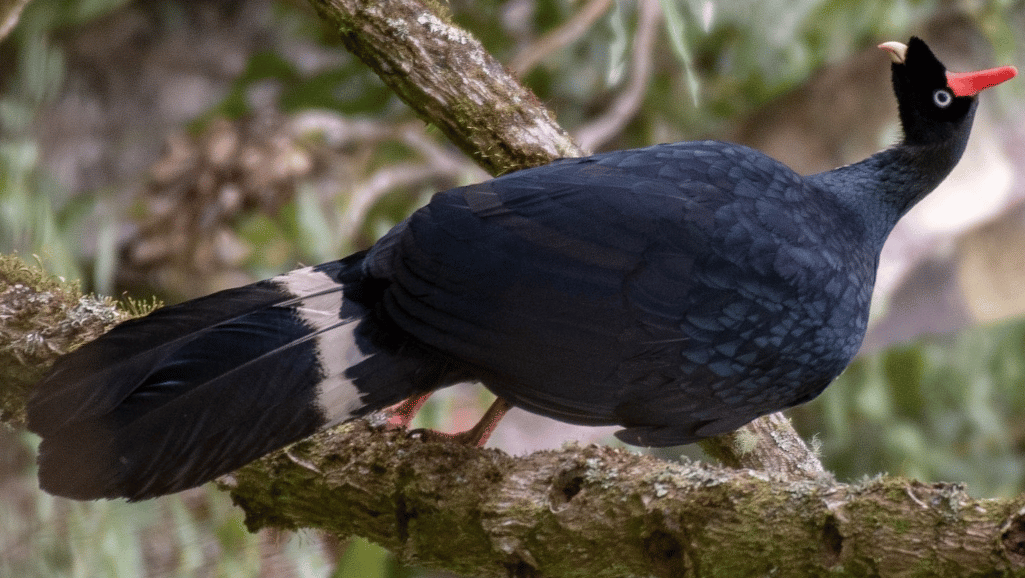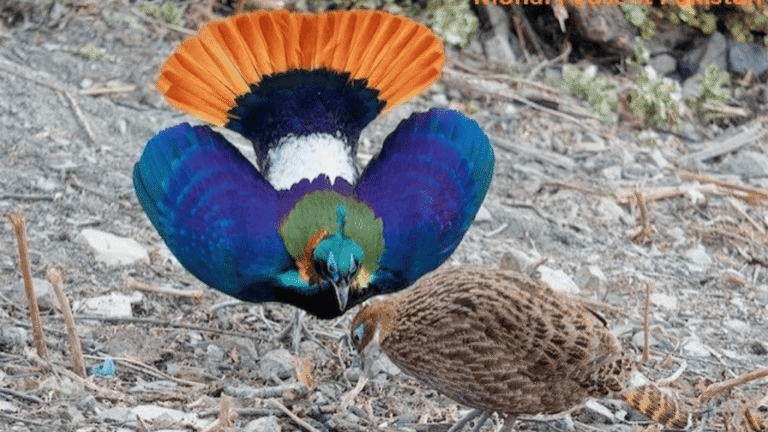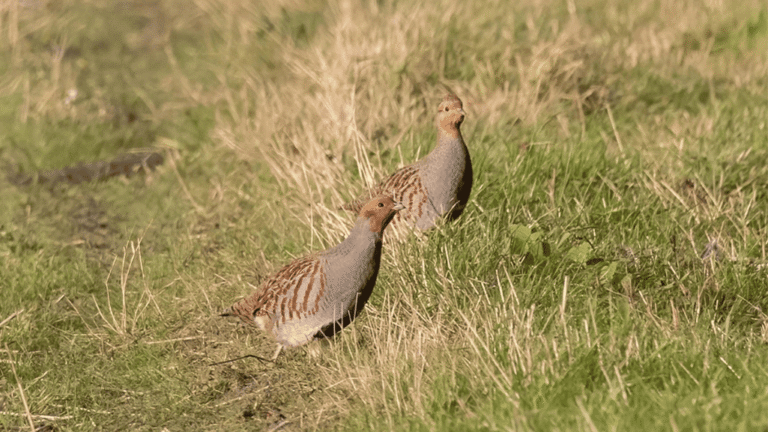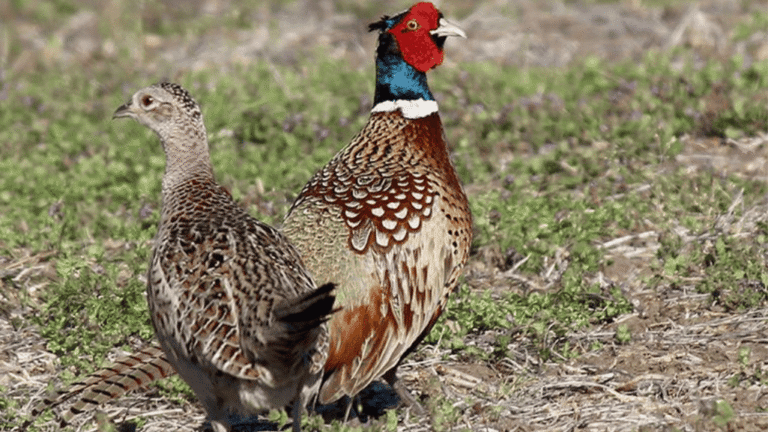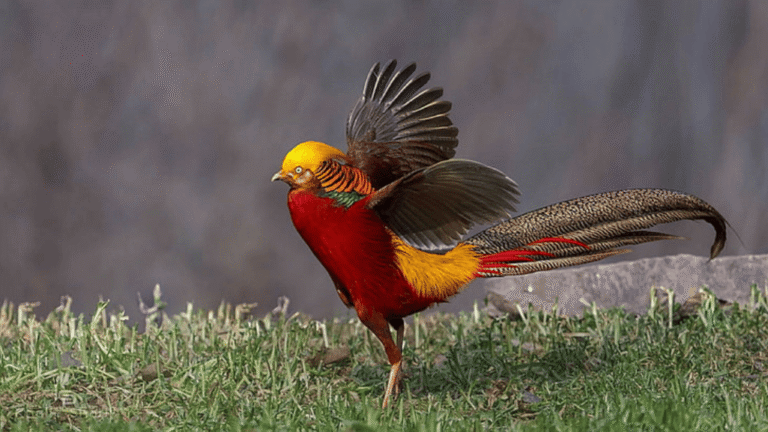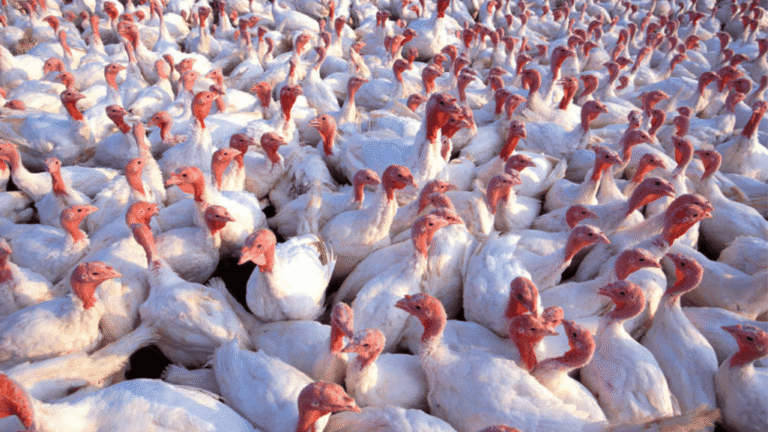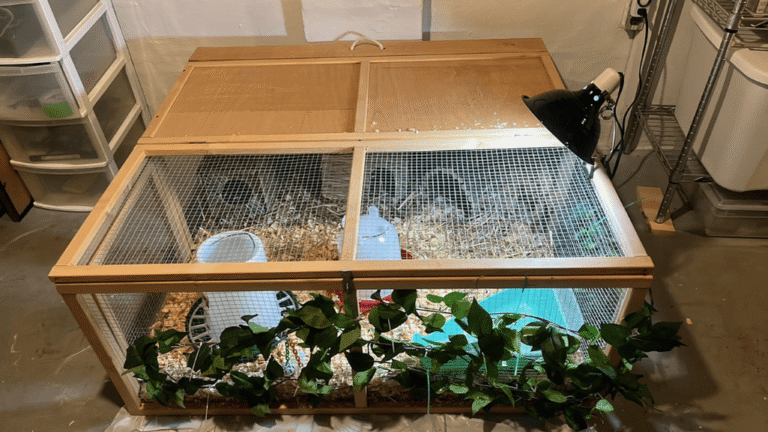Welcome to our article on the Horned Guan, a rare bird species that is facing the threat of extinction. Native to the high mountainous pine/oak forests of southeastern Mexico and Guatemala, the Horned Guan is known for its distinctive red horn of bare skin on the top of its head. Unfortunately, habitat loss and hunting have drastically reduced the population of this unique bird, leaving only between 1,000 – 2,499 individuals remaining.
The preservation of the Horned Guan is crucial in order to protect the biodiversity and ecological balance of its habitat. Efforts are being made to conserve this species, including the establishment of the Horned Guan Conservation Center by the Saint Louis Zoo. Through education, research, and habitat restoration, significant steps are being taken to ensure the survival of this endangered bird.
Key Takeaways:
- The Horned Guan is an endangered bird species native to southeastern Mexico and Guatemala.
- Its population has been greatly reduced due to habitat loss and hunting.
- Efforts are being made to conserve the Horned Guan, including the establishment of the Horned Guan Conservation Center.
- The Horned Guan plays a crucial role in the regeneration of mountain forests through seed dispersal.
- Conservation of the Horned Guan is essential for maintaining the ecological balance and biodiversity of its ecosystem.
Habitat and Distribution of the Horned Guan
The Horned Guan is a fascinating bird species that can only be found in the high mountainous pine/oak forests of southeastern Mexico and Guatemala. This unique bird occupies a specific ecological niche and is highly adapted to its habitat.
Unfortunately, the Horned Guan population has faced significant challenges due to deforestation and habitat degradation. As a result, their numbers have declined drastically. It is estimated that there are currently only between 1,000 – 2,499 individuals left.
- The Horned Guan has a limited habitat range, primarily residing in the high mountainous pine/oak forests of southeastern Mexico and Guatemala.
- Deforestation and habitat degradation have been major factors contributing to the decline in the Horned Guan population.
- Current estimates suggest that there are between 1,000 – 2,499 Horned Guans remaining in the wild.
Efforts are being made to protect and restore the habitat of the Horned Guan to ensure the survival of this endangered bird species. Conservation organizations and local communities are working together to address the threats and implement necessary measures for the preservation of their habitat.
To visualize the habitat range and distribution of the Horned Guan, refer to the map below:
| Horned Guan Habitat and Distribution |
|---|
| The Horned Guan is found exclusively in the high mountainous pine/oak forests of southeastern Mexico and Guatemala. |
| Deforestation and habitat degradation have resulted in a significant decline in the Horned Guan population. |
| Current estimates suggest that there are between 1,000 – 2,499 Horned Guans remaining. |
| Conservation efforts are focused on protecting and restoring the habitat of the Horned Guan. |
Physical Characteristics of the Horned Guan
The Horned Guan, with its unique physical features, is truly a remarkable bird. Its distinct appearance sets it apart from other avian species. Let’s explore the physical characteristics that make the Horned Guan so intriguing.
Horned Head
The most striking feature of the Horned Guan is the red horn-like structure on the top of its head. This bare skin horn is present in both male and female individuals, adding to their captivating allure. Unlike antlers or feathers, the horn is not connected to the bill or any other body part, making it an extraordinary attribute unique to this species.
Feathered Beauty
The body feathers of the Horned Guan are predominantly black, exhibiting a glossy blue-green sheen. This dark plumage contrasts with the white mottled pattern found on the front of their necks and chests. The combination of black and white creates an exquisite visual display. Additionally, Horned Guans boast a white band on their tails, adding a touch of elegance to their overall appearance.
The table below summarizes the physical characteristics of the Horned Guan:
| Physical Feature | Description |
|---|---|
| Horned Head | Red horn-like structure on top of the head |
| Body Feathers | Black with a glossy blue-green sheen |
| Neck and Chest | Mottled white pattern |
| Tail | White band |
The size of a small turkey, the Horned Guan truly stands out with its distinctive physical features. As we delve further into the behavior and conservation efforts surrounding this endangered bird species, the significance of its physical appearance will become even more apparent.
Behavior and Diet of the Horned Guan
The Horned Guan, with its distinct red horn of bare skin on the top of its head, exhibits fascinating behavior and has unique feeding habits. This section will delve into the behavior of this rare bird species and shed light on its diet and feeding preferences.
Behavior
The Horned Guan spends most of its time up in trees, making it an arboreal species. It utilizes tree branches as its primary habitat and forages among the forest canopy. This behavior not only enables it to find food but also provides protection from potential predators on the ground. The Horned Guan is known for its discreet nature, often remaining hidden in the foliage to camouflage itself.
One remarkable aspect of the Horned Guan’s behavior is its polygamous mating system. Males establish territories and attract multiple females for mating. This behavior contributes to the genetic diversity within the population and fosters successful reproduction.
When it comes to nesting, the Horned Guan displays impressive adaptability. It constructs nests in high branches, often found as high as 66 feet off the ground. This strategic placement helps protect the eggs and young from predators, ensuring their survival.
Diet and Feeding Habits
The Horned Guan is primarily a frugivorous bird, meaning it predominantly consumes fruits. Its diet consists of a variety of fruits, including those produced by trees in its native habitat. It feeds on different types of fruits, flowers, and leaves found in the high mountainous pine/oak forests.
While fruits are its main source of sustenance, the Horned Guan occasionally supplements its diet with insects. This minor inclusion of insects in their feeding habits provides the necessary protein and additional nutrients.
Here is a breakdown of the Horned Guan’s diet:
| Food | Percentage in Diet |
|---|---|
| Fruits | 80% |
| Leaves | 15% |
| Flowers | 4% |
| Insects | 1% |
The Horned Guan’s feeding habits play a vital role in the ecosystem. As a frugivorous bird, it assists in the dispersal of seeds through its droppings, contributing to the natural regeneration of plant species and the overall health of the forest.
Conservation Efforts for the Horned Guan
The Horned Guan is an endangered bird species facing significant threats to its survival. To combat these challenges and ensure the preservation of this unique bird, various conservation efforts are being undertaken.
The Saint Louis Zoo has established the Horned Guan Conservation Center, which serves as a leading force in the conservation and preservation of this endangered species. This center plays a pivotal role in coordinating conservation initiatives in the United States, collaborating with local partners and organizations.
One critical aspect of these efforts is raising awareness through education programs. By educating local communities about the importance of Horned Guan conservation, the center aims to foster a sense of responsibility and encourage sustainable practices. Through this education, individuals are empowered to take actions that reduce threats to the species, such as illegal tree removal and hunting.
Furthermore, ongoing scientific research focuses on studying the nutritional habits of the Horned Guan. By understanding their diet and feeding patterns, researchers can develop effective conservation strategies that support the species’ survival. This knowledge contributes to the development of targeted conservation plans and informs conservationists about the specific needs of the Horned Guan.
Importance of the Horned Guan in the Ecosystem
The Horned Guan plays a vital role in the regeneration of the mountain forests in its habitat through seed dispersal. As a frugivorous bird, it feeds on a variety of fruits, and in the process, it ingests the seeds. These seeds are then dispersed across the forest when the bird excretes them in different locations.
This seed dispersal mechanism is crucial for the natural regeneration of plant species in the Horned Guan ecosystem. By spreading seeds throughout the forest, the Horned Guan contributes to the overall health and biodiversity of the ecosystem. It helps in maintaining a balance in the distribution of plant species and ensures their survival.
Through its role as a seed disperser, the Horned Guan helps to restore and replenish the forest by providing new opportunities for plant growth. The seeds that are dispersed have the potential to germinate and develop into new trees and vegetation, contributing to the continuous cycle of life in the ecosystem.
Furthermore, the Horned Guan aids in the dispersal of larger seeds that may be difficult for smaller animals to transport. By swallowing and excreting these seeds, the bird helps to ensure the establishment and survival of a diverse range of plant species, which is essential for the functioning of the ecosystem.
Role of Horned Guan in Seed Dispersal
The Horned Guan’s feeding habits and digestive system allow it to effectively disperse seeds over large areas. As the bird moves from tree to tree, consuming fruits, it inadvertently carries seeds within its digestive tract. These seeds are then released in different locations, often far away from their parent tree, promoting the dispersal and colonization of new areas within the ecosystem.
The ability of the Horned Guan to disperse seeds over long distances helps to improve genetic diversity within plant populations. This is crucial for the long-term survival and adaptation of plant species to changing environmental conditions.
The role of the Horned Guan in seed dispersal highlights its importance in the maintenance and conservation of the Horned Guan ecosystem. Protecting and preserving this unique bird species is not only essential for its own survival but also for the overall health and biodiversity of the ecosystem it inhabits.
Horned Guan Seed Dispersal Example
A study conducted in the high mountainous forests of southeastern Mexico and Guatemala showed the significant impact of Horned Guans on seed dispersal. Researchers collected fecal samples from Horned Guans and examined the seeds present in order to assess their potential for germination.
| Plant Species | Seeds Present in Fecal Samples | Potential Germination |
|---|---|---|
| Species A | 35 | 85% |
| Species B | 22 | 90% |
| Species C | 17 | 75% |
The results of the study revealed that a high percentage of seeds found in the fecal samples of Horned Guans had the potential to germinate and establish new individual plants. This demonstrates the effective seed dispersal ability of the Horned Guan and its contribution to the natural regeneration and biodiversity of the Horned Guan ecosystem.
The image above depicts the Horned Guan perched in a tree, highlighting its role as a seed disperser within its habitat.
Conclusion
The Horned Guan, an endangered bird species native to the pine/oak forests of southeastern Mexico and Guatemala, is facing significant population decline due to habitat loss and hunting. To combat this crisis, efforts are underway to conserve this unique bird through various initiatives. The establishment of the Horned Guan Conservation Center by the Saint Louis Zoo is a key step in this conservation journey.
Conservation efforts primarily focus on protecting and restoring the Horned Guan’s natural habitat, while also raising awareness about the importance of its preservation. By safeguarding the Horned Guan, we not only ensure the survival of an endangered bird species but also uphold the delicate balance and biodiversity of its ecosystem.
The Horned Guan is not just a symbol of the rich biodiversity found in its habitat but also plays a vital role in the regeneration of mountain forests through seed dispersal. As a frugivorous bird, it consumes fruits and aids in the natural regeneration of plant species. This contribution highlights the significance of bird conservation in maintaining the overall health and diversity of ecosystems.
In conclusion, protecting and preserving the Horned Guan is essential for the successful conservation of an endangered bird species, while also supporting the broader goal of maintaining ecological balance and biodiversity. By committing to these conservation efforts, we can ensure a brighter future for both the Horned Guan and the fragile ecosystems it calls home.
Frequently Asked Questions
What is the habitat of the Horned Guan?
The Horned Guan is found exclusively in the high mountainous pine/oak forests of southeastern Mexico and Guatemala.
Why is the Horned Guan endangered?
The population of Horned Guans has been greatly reduced due to habitat loss and hunting.
How many Horned Guans are left in the wild?
It is estimated that there are only between 1,000 – 2,499 individuals left.
What does the horn on the Horned Guan’s head look like?
The Horned Guan has an unusual red horn of bare skin on the top of its head, which is not connected to the bill or feathers.
What is the diet of the Horned Guan?
The Horned Guan primarily feeds on fruits, flowers, leaves, and occasionally insects.
How does the Horned Guan contribute to the regeneration of mountain forests?
The Horned Guan plays a role in seed dispersal through its consumption of fruits, aiding in the natural regeneration of plant species in mountain forests.
What are the conservation efforts for the Horned Guan?
Conservation efforts include protecting and restoring the habitat of the Horned Guan, raising awareness, and implementing actions to reduce threats like illegal tree removal and hunting.
Why is the Horned Guan important in the ecosystem?
The Horned Guan plays a crucial role in the regeneration of mountain forests through seed dispersal, contributing to the overall health and biodiversity of the ecosystem.


